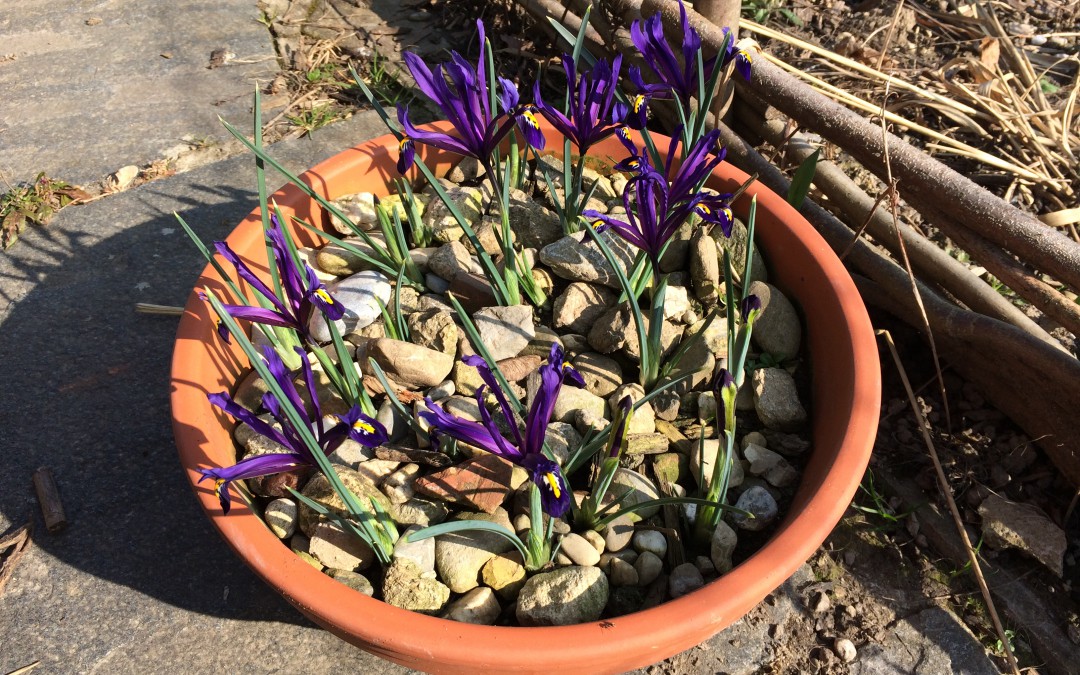In the family of early spring flowering bulbs, one usually thinks off snowdrops or the yellow flowering Eranthis hyemalis. There is however a group that deserves to be better known, that of Iris reticulata. There are small bulbous irises, which bear little resemblance to their showy cousin garden irises, Iris germanica, which flower later in the season. I absolutely admire how this small delicate looking plant is able to cope with the harsh weather to offer us such a delightful show.
Its Latin name refers to the thin skin surrounding the bulb that lookw like a net. The specie measures approximately 15cm and produces violet blue flowers in March. As an added bonus, reticulate iris exudes a delicious perfume, particularly during a sunny afternoon. There exists a whole series of cultivars offering a large palette of colors: deep blue for I. r. ‘Harmony’, light blue for I. r. ‘Cantab’ and even reddish purple for I. r. ‘J. S. Dijt’. Who can resist the temptation to start a small collection?
Iris reticulata has the reputation to be not fully hardy. This is absolutely not the case. Like many other plants, it is the excess of moisture in winter, which kills the plant, by inducing a rot of the bulb. It should be planted in a very draining spot. It then develops in these appropriate conditions into large colonies. September is the ideal month to plant. The bulb has then enough time to settle and develops a good root system before the arrival of winter. Furthermore, it has a bad tendency to split after a first flowering into a large quantity of small bulbs, too small to be able to flower the next year. Therefore, it is better to plant it deeper than usually advised on packaging, at approximately 10cm.
In my garden, my clay soil is too heavy and I do not have the appropriate conditions to welcome it. Thus, I plant them in pots, in a mixture of compost thinned with sharp sand and grit. During the winter season, I place the pots under the house roof, to keep the bulbs rather on the dry side. I can also bring the pots closer to the house entrance during flowering and hide them in a half-shady spot thereafter. Then, I let them develop their foliage, which can reach up to 30cm. Like all bulbs, it is important to let the foliage develops and dies back naturally, in order to replenish the bulb. It is then able to flower again. This is certainly the other advantage of planting reticulate irises in pots; they can be hidden during this less gracious phase of their development.
To conclude, I would like to also mention another species in the group, Iris histrioides, which grows in similar conditions, but bears larger, somewhat showier flowers. In both cases, it is an absolute must-have on your shopping list of flowering bulbs next fall.


Recent Comments